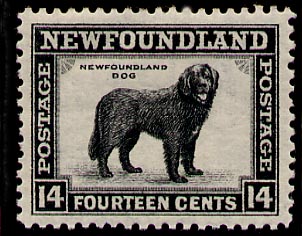
History

 |
Newfoundland History |
 |
Northern Mesabi
[This document was written in 1948. For the full citation, see the end of the text.]
In bleak Ungava, (1) the stunted tamarack had turned burnt amber and each morning light snow frosted the tough caribou moss. For the engineers probing the biggest iron ore deposit since Minnesota 's Mesabi, it was time to call it a summer. Day after day a little Norseman seaplane dipped down on to Quebec and Labrador lakes, picked up men and supplies, moved them back to the main base at Burnt Creek (pop. 190). This week the twelve drills were operating close by Burnt Creek. Next week they would be silent, and the year's work would end.
Hollinger Consolidated Gold Mines Ltd. of Montreal and its U.S. partner in the Ungava venture, the M. A. Hanna Co. of Cleveland (which holds a 40% interest), were happy over the summer's work. Their engineers had already proved 300 million tons of high-grade ore.
The Gamble. Geologists have long known of the vast iron ore riches in the trough straddling the border of Quebec and Labrador . When Dominion Geologist A. P. Low talked about the deposits 50 years ago, Mesabi was just coming into its own, and nobody was interested in the sub-Arctic wilderness. In 1937, when Quebec Geologist Joe Retty came out of Ungava with a more detailed report of high-grade iron ore, Mesabi was still king. But as war demand cut deep into Mesabi, Retty's reports became more interesting. By 1942 Hollinger President Jules Timmins was ready to gamble $5,000,000 on Ungava. Since then exploration drills have been biting into the northern earth.
So rich was the lode that drilling was done only where ore could be reached readily. One of the best deposits was found by accident when a new-type drill was tested at the Burnt Creek camp site. The drill bit down into the earth, struck rich ore at two feet, was still in it when drilling was stopped at 367 feet.
For exploration work in the wilderness everything had to be flown in, from beef to bulldozers. At first, air freight cost Hollinger 73¢ a pound. By last April Jules Timmins had his own airlift operating from Seven Islands to the airstrip at Knob Lake. This season it carried 750 tons, at an average cost of 7¢ a pound.
A 10¢-an-Hour Bonus. So far Hollinger has had no trouble recruiting workers, mostly Newfoundlanders and French Canadians. They eat well, pay $1.25 a day for food that costs the company $4.50. They work twelve-hour shifts, around the clock, six days a week, make from 70¢ to $1.30 (top driller pay) an hour. For those who stay for six months - most of them do - there is a 10¢-an-hour bonus. Because they are in to make a stake, they get along without liquor or movies, take their fun in recreation but sessions with harmonicas, jew's-harps and fiddles.
Before Hollinger can move a ton of ore, it must build a railroad to the St. Lawrence at Seven Islands, where it is ice-free about ten months out of the year. The survey for the 360-mile rail line ($100 million to build and equip) will be finished next year. The line will take three years to complete. Hollinger already has an eye on Eaton Canyon 's 350-ft. waterfall, with its 500,000 h.p. potential, for a power source. Production in Ungava is probably five years away, and some $200 million will be poured into it before a ton of ore is set down at dockside.
Of Ungava's projected initial production of 10 million tons of ore a year, Canada can use less than 2,000,000. Hollinger looks to Britain and Europe to take some ore, to the U.S. as its top market. Such a source of funds, said Quebec 's Minister of Trade and Commerce Paul Beaulieu, would "bring about a balance in the Canadian-American dollar situation." Ungava has more than dollar importance: if war came, it might be a chief source for U.S. and Canadian armament.
• Eskimo for Far Away, the general name for northeastern Canada.
Source: " Northern Mesabi", Time (Canadian edition), October 18, 1948, p. 20
Return to Canadian Views of Newfoundland's Entrance into Confederation
© 2004 Claude Bélanger, Marianopolis College |